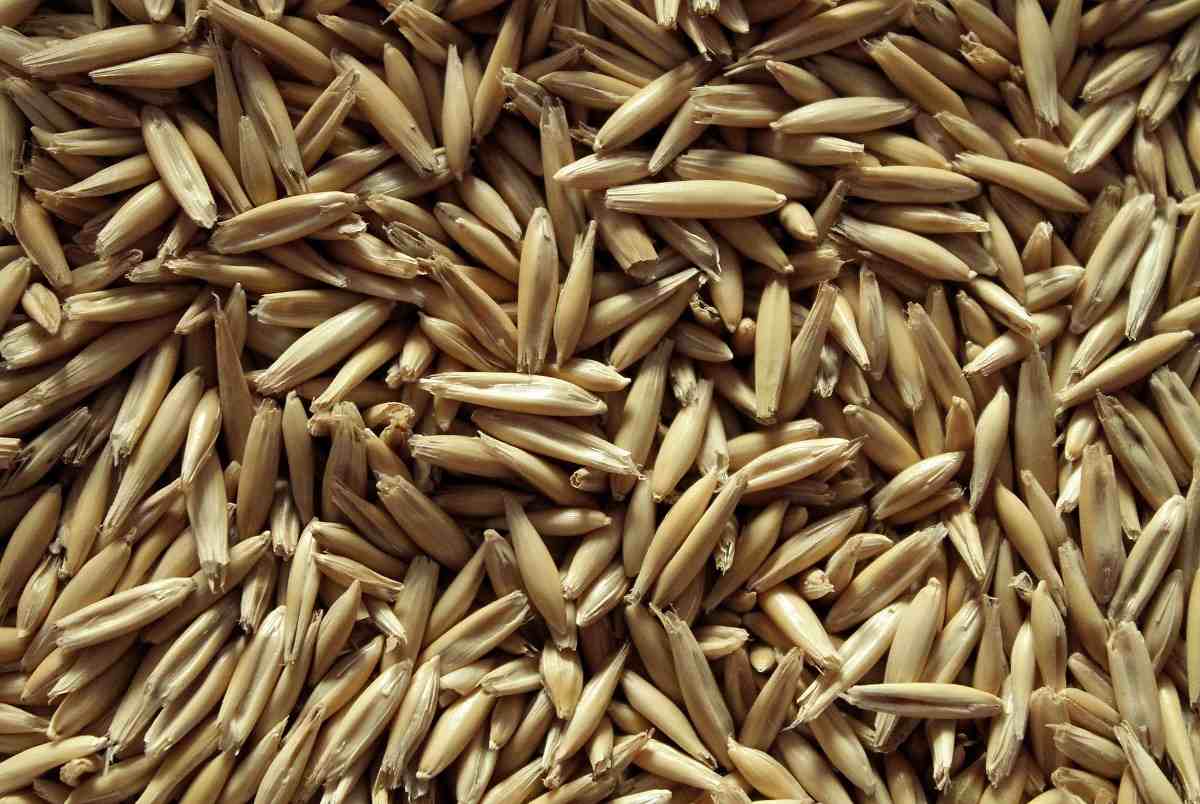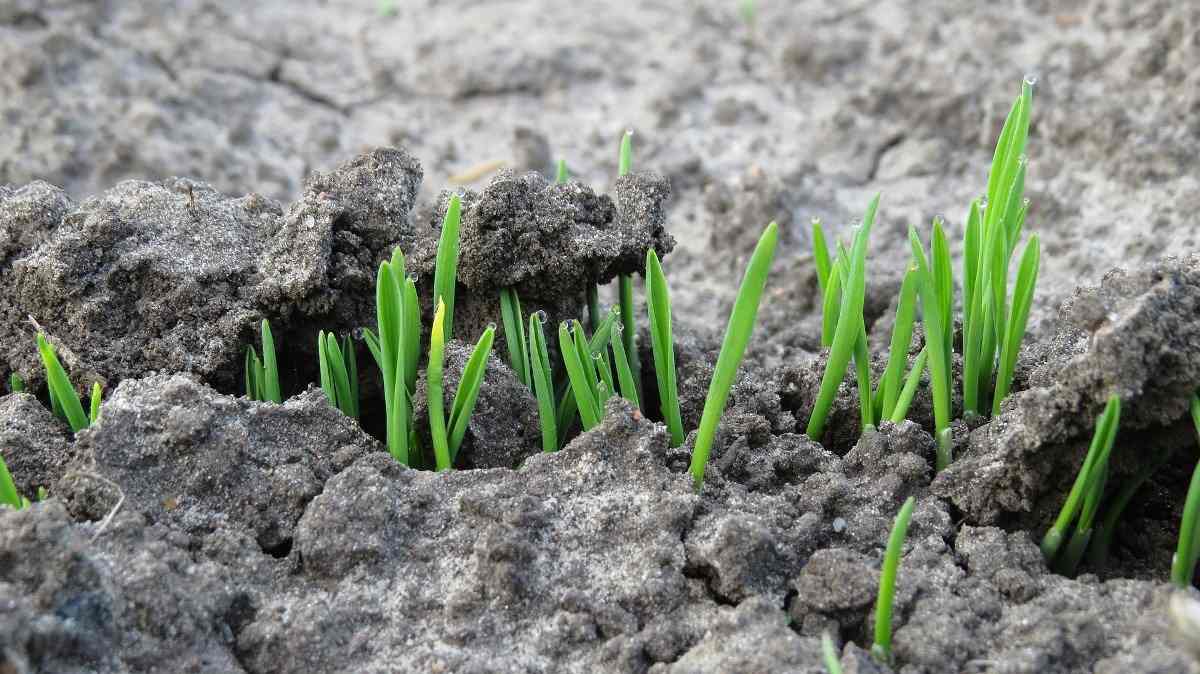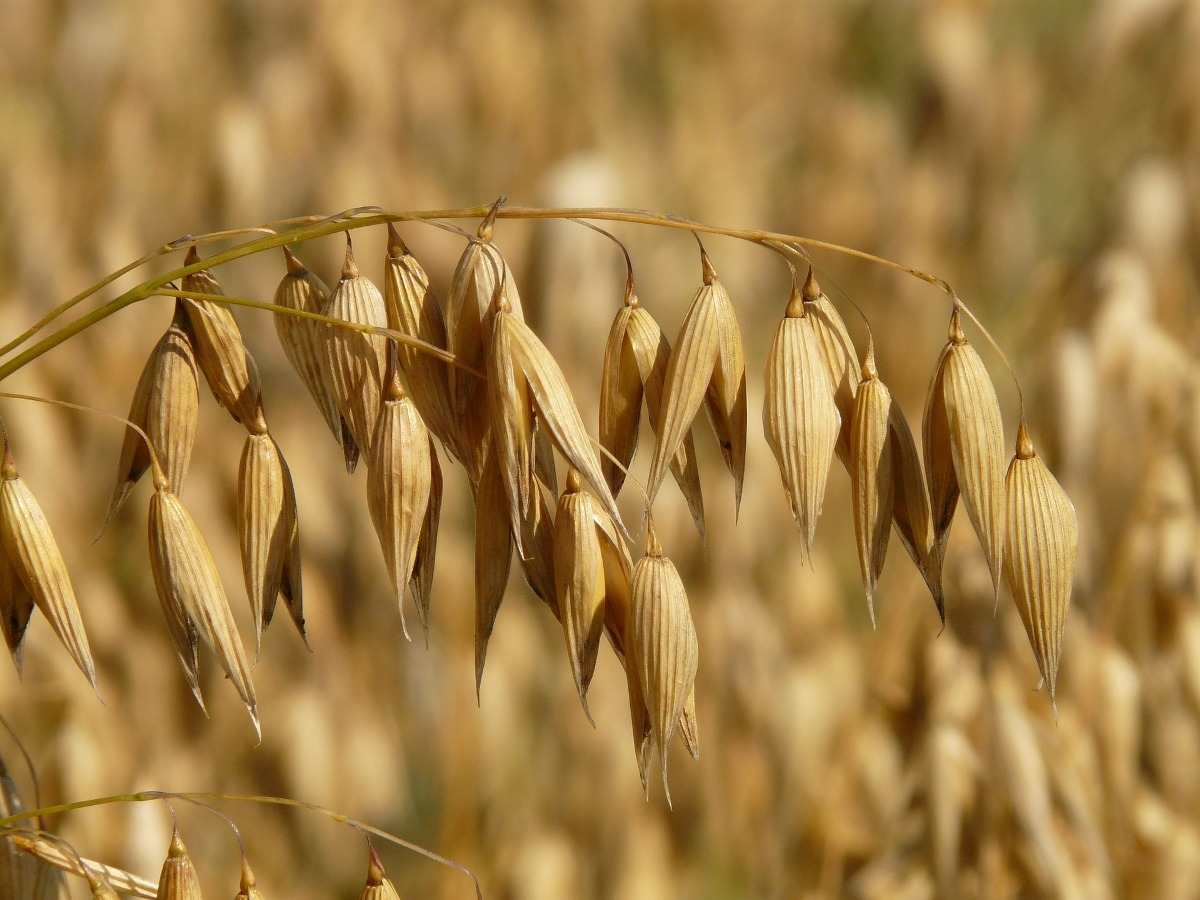Introduction to oats seed germination
Oats or common Oat is an important Cereal crop as well as a fodder crop. The cultivation of Oat is similar to the wheat crop. Oat is mainly grown in Temperate and Subtropical climates. It can thrive well in high-altitude tropics. They are popular due to their health benefits. Oatmeal is a famous food. Oats are rich in proteins and fiber. They help in weight loss, controlling blood pressure, and for building a strong immune system. Oats are one of the crops grown during the Rabi season and it is an important Cereal crop as well as a fodder crop. Oats offer numerous health benefits such as they are rich in protein and fiber, so it helps reduce weight, control blood pressure, and increasing the power of fighting diseases. Oats are used as straw or dried fodder. In this article we also discussed below topics;
- How do you germinate Oats
- Oats seed germination temperature
- How long does Oats take to germinate
- Process for germinating Oats seeds
- Oats seed germination period
A step by step guide to Oats seed germination process
Oats can serve many different purposes, whether you eat them, feed them to farm animals, or use them to benefit your farmland. While Oat seeds require a certain soil condition and proper care to thrive, growing Oats is a relatively simple and straightforward process. Oats provide quick, weed-suppressing biomass, take up excess soil nutrients, and improve the productivity of legumes when planted in mixtures. Oats thrive under cool, moist conditions on well-drained soil. Plants can reach heights over 4 feet and stands generally fare poorly in hot, dry weather.
In case if you miss this: Black Gram Seed Germination Procedure.

Oats have numerous uses in the food and commonly, they are rolled or crushed into oatmeal, or ground into fine Oat flour. Oatmeal is chiefly eaten as porridge but may be used in a variety of baked goods, such as Oatcakes, Oatmeal cookies, and Oat bread. Oats may be consumed raw, and cookies with raw oats are becoming popular. Oats grow best in black and grey wooded soil zones that have higher moisture but grow on sandy loam to heavy clay soils as long as they have good drainage.
Popular varieties of Oats
Weston-11 – Plants have a height of about 150 cm and grains are long and amber in color.
Kent – It is suitable for growing in all areas of India and average plant height is 75-80 cm. It gives a fodder yield of 210 quintals/acre.
OL-10 – Seeds are of medium size and gives average fodder yield of 270 quintals/acre.
OL-9 – Gives average seed yield of 7 quintals/acre and fodder yield of 230 quintals/acre.
Bundel Jai-822 – It takes 95–100 days for flowering and matures in 125 to 130 days. The fodder yield is about 50 t/ha green and 12 t/ha dry.
UPO–212 – The variety has a light green stem with 8 to 10 tillers, thin and variable awns. It flowers in 140–150 days. The average green fodder yield is about 60 t/ha.
OL-125 – This variety is suitable for single cut/multi-cut and yields about 58 t/ha green fodder.
OL 11 – It gives an average yield of 245quintal/acre. The plants are leafy, long, and wide leaf.
Other states varieties are;
Brunker-10 – It is a quick-growing variety having fine, narrow, smooth leaves and it is resistant against drought. It can be cultivated in areas of Punjab, Delhi, Haryana, and Uttar Pradesh.
HFO-114 – This plant variety is tall and it is resistant to lodging. It has bold seeds and has an average yield of about 7-8 quintal/acre of seed. It is a high yielding variety of 500 quintals of green fodder per hectare, which grows fast after harvesting, usually, 2 to 3 cuts are taken.
Algerian – This variety is suitable for irrigated areas and it has slow early growth and light green color leaves.
OS-6 – It is suitable for cultivation in all areas of India. Gives average green fodder yield of about 210 quintals/acre.
Bundel Jai 851 – Suitable for cultivation in all areas of India and it gives average green fodder yield of 188 quintals/acre.
Other species are FOS-1, UPO-13, UPO-50, UPO-92, UPO-123, UPO-160, OS-6, S-8, O- S7, O- S9, O- L88, O L- 99, JHO- 817, JHO- 822K- 10, N. P.-1, N. P.- 2, N. P-1 Hybrid, NP-3 Hybrid, NP-27 Hybrid, BS-1, B-2S, Biston-2 Biston-11, Brackle-11, Brackle-10 etc variety is also very popular.
Soil temperature for Oats seed germination
Oat seeds will germinate at 5°C. Though, like most plants, Oats will germinate faster as soil temps increase; the goal is to balance an early planting date with biological limitations and the potential for seed predation or pathogen issues. While early planting dates mean higher yield and test weight potential, this spring has pushed the limit on what early planting can mean with some farmers planting in early to mid-March.
Planting into a firm seedbed and ensuring proper seed to soil contact will give Oats a good start. A firm seedbed should go some ways towards modulation of seeding depth, which, for a small grain-like Oats should not exceed 1.5 to 2 inches.
Conditions for Oats seed germination
Seeds must be grown outdoors, sow the seeds of wild Oats at a depth of 6mm at the beginning to middle of spring. Seedlings of wild Oats can be purchased; annual varieties must be planted in the early spring, whereas perennial varieties can be planted either in the early spring or in autumn. Depending on the variety wild Oats seedlings must be planted 25 to 30cm apart (small) or 45 to 60cm apart (larger varieties of Oat). They must be planted in an area that receives full sunlight in dry soil with a pH of 6 to 7.5.
Earlier-seeded Oats give increased yields and quality. The ideal soil temperature for Oats is above 5°C. Proper seed treatments can be used to help prevent seed- and soil-borne diseases. In cool, wet growing conditions they could help prevent root rot. Seed treatments are recommended for hulless Oats as they are more susceptible to seed diseases.
Growers use the higher seeding rate of this range in high-moisture, high-fertility, late seeding, and high wild-Oat competition situations. Normally, seeding rates can be calculated using thousand kernel weights (TKW) times survival percentage (the percentage of seeds expected to germinate and produce vigorous seedlings). Under normal growing conditions, growers must expect 95 percent germination, but in cold, wet soil, germination could be 90 to 93 percent. Growers should increase the seeding rate of hulless Oats because their fragile, thin seed covering can reduce seed germination.
The optimum seeding depth for Oats is 1 to 2 inches deep enough to reach soil moisture and should not exceed 3 inches. Oats are seeded with a row spacing of 7.5 to 12 inches but research has shown that in no-till systems wider row spacing up to 14 inches does not affect plant numbers or tillering. Wider row spacing can result in increased wild Oats and, in dry conditions, may cause harvest issues if there is not enough stubble to hold the swath off the ground. Oat seed size may be important for competition with wild oats.
Sowing depth of Oats
Sowing plump seed at the right depth is an important step towards achieving vigorous, healthy seedlings. Planting must be deep enough to provide uniform coverage of the seed and to help maintain moist conditions for germination. The recommended depth for most Oat varieties is 3 to 6cm. Oat seedlings emerge by elongation of the mesocotyl and coleoptile (in wheat and barley it is through elongation of the coleoptile) so Oats can safely be sown deeper than wheat and barley.
Sowing too shallow may;
- Place the seed in dry soil and it can fail to emerge.
- Cause shallow crown depth that can cause the plants to lodge when soil is very wet and in high winds.
Consequences of deep sowing can include;
- Delayed seedling emergence.
- Reduced root growth making plants more susceptible to root diseases.
- Delayed plant development and tillering.
- Reduced competitiveness with emerging weeds.
Use press-wheels to compress the soil directly above the Oat seed for even distribution during seeding. The seed is spread through a depth of about 2 to 3cm with the occasional seed left on the soil surface. Coleoptile and mesocotyl length are temperature dependant so early sowing into warmer soils will effect in them being longer compared to later sowings in winter.
You should not miss this: Green Garm Seed Germination, Time Period, Process.

Sow in late summer season to grow a cover crop that forms its mulch when it is winterkilled, or when using oats as a companion crop for slower-growing legumes. Oats can be grown as a spring cover crop to increase soil organic matter. Broadcast seed into cultivated soil so that the seeds are 3 inches (7 cm) apart and one-half inch (1 cm) deep. No thinning is required. Increase spacing to about 8 inches (20cm) apart when growing Oats with other cover crops. Then, the second week of October to last week of October is the optimum time for sowing seeds.
Oats seed spacing or the Oats plant distance
The spacing of 25 to 30 cm should be kept between rows. Spring planted Oats do not produce many tillers. Consequently, a higher seeding rate and slightly shallower planting depth result in faster establishment and increased growth. Growth is improved when the seed is drill-planted at a seeding rate of 80 to 100 pounds of seed per acre (25 to 30 seeds/sq. ft.). Seeding depth can be as deep as about 1½ inches, but planting at only ½ to ¾ inches deep will increase the rate of emergence, establishment, and forage production potential.
Keep the ground moist to allow the seeds to germinate and continue to do so as the plants begin to grow. The compost or manure must help the Oats retain moisture, but it will be necessary to water them periodically whenever the soil begins to dry out. If the area you live in gets plenty of rain, however, you could not need to water your Oats at all.
The seed rate and seed treatment of Oats
A seed rate of about 25 kg is required for one-acre land. The seed must be treated with Captan or Thiram about3 gm/kg of seeds to protect seeds from various fungal and pathogenic diseases.
Oats harvesting
Oats are fully mature and ready to harvest after 4 to 5 months of sowing. To avoid grain shedding, the crop must be harvested in early April month. The timing of harvest is critical to avoid damage to Oat hulls, thereby reducing quality and crop yield.
You may also check this: Chickpea Seed Germination, Time, Temperature, Procedure.

After 75 to 85 days of sowing seed, 50% of the Oat crop can be harvested. Harvesting 50% of Oats crop can give about 400 quintals of green fodder. The crop taken for two harvestings must be harvested in 55 to 60 days and the second harvesting must be done after 50% flowering. This harvesting will give 550 quintals of green fodder per hectare. The first harvest of the plants must be done at a height of 4 to 5 centimeters. They are fully mature and ready to harvest after 4 to 5 months of sowing or you can say they can be harvested in early April month.
Commonly asked questions about Oats cultivation
How long do Oat seeds take to germinate?
Time seeding to allow at least 6 to 10 weeks of cool-season growth. And moderately fertile soil gives the best stands.
Will feed Oats germinate?
Feed Oats are relatively cheap, but they are rarely a wise purchase, because they are often not tested and may contain weed seeds (noxious weed seeds in particular), have unknown seed germination, and foreign material presence. Spring Oats are not inexpensive to grow.
Which type of crop is Oats?
Oats domesticated cereal grass (family Poaceae) grown primarily for its edible starchy grains.
How long does it take for Oats to emerge?
Oats require about 60 days of growth following germination to reach the boot-stage. However, summer seeded Oats tend to mature more slowly as days shorten in the fall, so require an additional 10 days or so. Oats seeded on August 1st would be ready to harvest in early-October.
Will Oats grow after cutting?
Grazing regrowth is an option if Oats are harvested while still in the boot phase, 50 to 60 days after planting. Though, if grazing is not an option, Oats can be harvested in a single cutting to obtain high-quality tonnage at a lower cost.
How many pounds of Oats should be planted per acre?
Oats should be drill-planted on a conventionally prepared seedbed at a seeding rate of about 80 to 100 pounds of seed per acre.
The conclusion of oats seed germination
For better seed germination percentage and great yield, you must select quality oat seeds. You may also check this: How to Make Money from Castor Oil Manufacturing.
The info provided is useful.